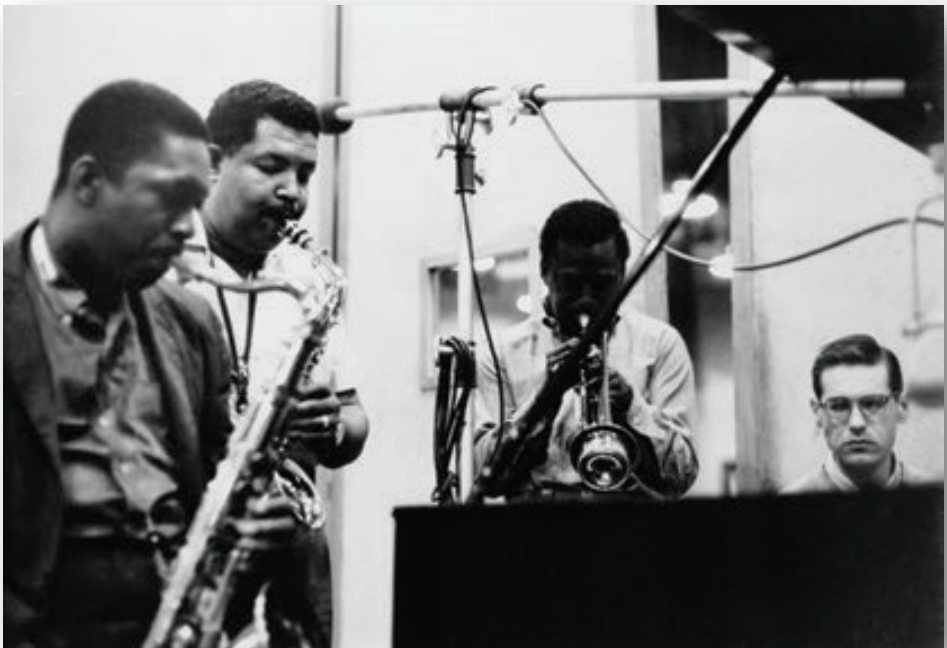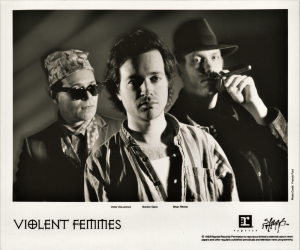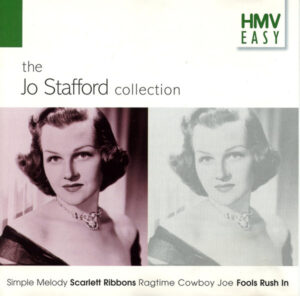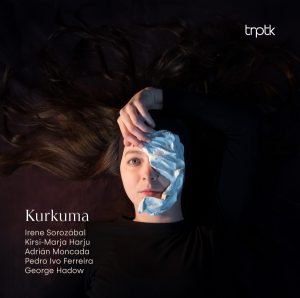This will be the best sounding digital reissue of Kind of Blue in your collection. There. I said it. No waffling around. This reissue is stunningly good. If you don't run and get it NOW, you will kick yourself for not having done so sooner once you finally hear it.
Miles Davis - Kind of Blue. HDTT 1959, 2022 (Pure DSD256) HERE
Transferred directly from an excellent tape in pure DSD256, with no PCM processing, Bob Witrak has created a transfer that is more transparent, more resolving, and more natural sounding than any I have in my rather extended collection of over a dozen different issues. Bob is something of a technical savant when it comes to pulling information off of a reel-to-reel tape. And here he accomplished something very special from a very good tape to which he had access. (No, not the master tape.)
Update 09-11-2022: Bob has given us some more insight to the provenance of this tape. Now posted on his website, he says: "Transferred from a 15ips 2-track tape". There was no retail release of all five tracks on 15ips tape, as far as I know, so this sounds he had access to a safety master or a production master for manufacturing.
I know, I know. There have been lots of reissues of this iconic album. And my music collection contains many of them accumulated over the years. So, when yet another appears, there is a tendency to yawn and look the other way.
But, I assure you, looking away in this instance would be a great loss for your musical enjoyment.
A couple of months ago, Bob sent me some sample tracks from this transfer. He wanted some feedback, but he was not yet sure he would release this. There are so many alternate reissues out there, he didn't want to release yet another unless it truly was something special.
Ann and I both listened. And there was no question—these were indeed very special transfers. They sounded open, natural, with real instruments in a realistic sound space, and with breadth and depth to the image. Oh, my, yes. And I wrote him back saying so.
A couple days later I received another email from Bob with a link to download a different version of these sample tracks. He'd been experimenting and used a different analog-to-digital converter (ADC) in making the transfer of these tracks. What did I think?
Talk about putting a kid into the candy store to be able to hear two different transfers. Again, Ann and I both listened. And, interestingly, our initial reaction was that the new transfer might actually sound better. There was more snap and shimmer to the cymbals, a bit more definition to the leading edges of transients, everything just a bit sharper and crisper suggesting more detail. Hmmm... But was it overdone? Was it like over-sharpening a photo in post processing so that the image had greater apparent clarity but was no longer as true to the real thing?
And after a few repeat listening sessions over the next couple of days, this was indeed my conclusion. That second transfer was still good, but it fatigued me to listen to it. I wrote to Bob and told him, "The transfer using the first ADC sounds more natural, with greater air and overall relaxed but detailed sound. The second transfer (using the second ADC) is now wearing on me. While initially very attractive sounding with its punchier presence, today I'm hearing that as artificial. The sound is very up front, it grabs your attention, but it just doesn't sound right to me over extended listening. The midrange is just too projected, forced, punchy - and not in a good way."
And yet people will value different things. Even though we hear the same things, our listening priorities are different. It's rarely a matter of better or worse. It's most frequently a matter of what do I value most for my listening? What gives me the greater musical engagement and enjoyment?
When Bob got back to me this past weekend to tell me that he would be releasing KOB in a few days, he told me that he'd also sent the two different transfers to a couple people in the industry for their opinions. And so, Bob had a decision to make in releasing this tape. In his email, he writes:
I'm going to release KOB in a day or two.
FYI I'm going to go with the 1st ADC files; I hear on my end what you were hearing. I'm hearing more space between instruments and a more natural presentation, and a wider soundstage.
All that aside, the 2nd set of files was pretty good. I sent them to a couple of people in the industry, and they picked the second set (not the ones we preferred). I'm going with what I hear, but I don't think anyone will be disappointed.
This will be a pure DSD release straight off of the tape, with no PCM editing.
(quoted with permission)
And I don't think anyone will be disappointed, either.
One caution in listening to this HDTT file. It has huge dynamic range—the quiet sections are really quiet, the loud get very loud. There is no compression going on. So, beware.
As to comparisons to other, alternate, digital issues of this album, here are some of my observations...
Back in my days with a large vinyl collection, I had multiple different vinyl releases of this album: early Columbia 360, Classic Records reissue on 33rpm and 45rpm (selections), and Mobile Fidelity 45rpm. They were delicious, wonderful, and occasionally mind-blowing. I no longer have those available to me in my all-digital listening world. I have a couple needle drops, but they are at 24/192 and those files just don't begin to compare to this new transfer from tape at DSD256. They do provide pleasant memories of listening to the LPs through my Walker Audio Proscenium turntable and Aesthetix Io Signature phono-amplifier.
So, for comparison to these new HDTT transfers, I've listened to some digital files that sound quite good, including the Japanese SHM SACD file, the standard Sony U.S. SACD file, a rip of the 50th Anniversary Edition CD, and the 24/96 HDTracks file. Of these, the 24/96 HDTracks file sounds surprisingly good, notwithstanding the format. I may actually prefer it among these four commercially available files. It has more of that relaxed analog sound, with reasonably good detail. But, at the end of the day, it is just too lacking in resolution to be competitive.
The 50th Anniversary Edition CD, notwithstanding many other limitations, was my next preference among these. The sound has all the limitations of the Redbook CD standard, but it also has more of that natural ease that I'm being pulled to. The Japanese SHM SACD falls to last among these four. It is seductive at first with its definition and punch, but ultimately it sounds too "stiff" and "uptight" without that easy natural flow that the HDTT release reveals so nicely.
On the other hand, if you want to hear the speed corrected first side of this album, then you'll need to hear one of the Columbia/Sony CDs or SACDs, all my copies of which post-processed the file to correct the speed error (about a quarter tone sharp) that always existed in the original. How do you tell? Look at the timing for track 1, "So What". The non-corrected track runs about 9:07 minutes. The speed corrected track runs slower at about 9:21.
Update 9-9-2021: Bob Witrak has now added speed corrected versions of Side A, Tracks 1-3, to this release. These alternative speed corrected tracks take the original DSD256 transfer into DXD for post processing, then back to DSD. The alternative speed corrected tracks are included as tracks 6-8. If you previously purchased the album, you will have received an email from HDTT with a link to download the updated album with these speed correct alternative tracks. Now back to the original article...
About that speed error thing... You might recall that Columbia discovered that side A of this legendary title had always been issued a quarter tone too sharp as a result of a faulty tape machine that was running slow at the sessions. Columbia reissued Kind of Blue on CD with the tunes originally on side A at the correct speed. Classic Records then reissued the title on LP as a two record set—record 1 as it had always been complete with side A sharp, and record 2 with side A at the correct speed. This was the first time LP listeners were able to hear side A at the corrected speed. I have not read how Grundman accomplished the speed correction, but I've always assumed he did it in the analog domain via a speed adjustment to his playback tape machine as he cut the lacquer.
The HDTT release does not attempt to correct this pitch error in the original tape. Bob says they could easily have done so by moving the file into DXD for post-processing, correcting the pitch, then moving it back to DSD. However, his desire was to release as pure and transparent a transfer from the tape as possible, so this meant staying in pure DSD and keeping the pitch as on the tape. The far better choice, in my opinion and for my listening preferences.
The KOB recording session: John Coltrane, Cannonball Adderley, Miles Davis, Bill Evans (l-r). Image from the enclosed booklet, courtesy of HDTT.
So far, this article has been all about sound quality. But, it is the music on this album that causes seasoned seasoned jazz fans return to this record time and again—"even after they've memorized every nuance."
As the liner notes explain, seasoned jazz fans return to this album "because this is an exceptional band—Miles, Coltrane, Bill Evans, Cannonball Adderley, Paul Chambers, Jimmy Cobb, Bill Evans (with Wynton Kelly on track 2)—one of the greatest in history, playing at the peak of its power. As Evans said in the original liner notes for the record, the band did not play through any of these pieces prior to recording. Davis laid out the themes and chords before the tape rolled, and then the band improvised. The end results were wondrous, filled with performances that still crackle with vitality. Few albums of any genre manage to work on so many different levels, but Kind of Blue does."
Rolling Stone comments, "This painterly masterpiece is one of the most important, influential and popular albums in jazz. At the time it was made, Kind of Blue was also a revolution all its own. Turning his back on standard chord progressions, trumpeter Miles Davis used modal scales as a starting point for composition and improvisation breaking new ground with warmth, subtlety and understatement in the thick of hard bop."
The quality of the band, the quality of the music, the masterful improvisation demonstrated, all reward even more with better and better sound quality.
So, I reiterate what I said at the outset, this is the digital release of this album that you need to get for your music library. It will reward you endlessly.
Enough said. Just get this!
Update 24-hours after release... For just a bit of cross-checking validation, here's what some other actual purchasers of the DSD256 file of this album are saying about it at the HDTT website or by email to me:
Maracos H.
Incredible
At first upon hearing the preview I was rather perturbed. I have been used to hearing the speed corrected version of KOB and I sensed a bit of flutter in the beginning of that test track but I decided to give purchase the track after seeing the two previous reviews. This transfer is absolutely incredible in DSD256. You can hear the decay of the instruments into all corners of the room! You are hearing not only the performers but the legendary 30th street studio! These transfers are truly a gift to humanity and I am once again a happy customer!
Eric B.
OMG, what he said ^^^ and so much more!!
Rushton has said most of what needs to be said but let me go further. I’ve owned just about every early pressing possible, mono single letter stamper, stereo single letter stampers, Canadian single letter stampers, mono white label promo, stereo white label promo, … everything. This was a totally different recording. What you’ll notice is the harmonics around the piano and the additional texture to the cymbals and space, SPACE! Space around all the performers. Much more of the room interaction. It is dramatically different than any release I’ve ever heard. GO BUY THIS NOW.
Jim B.
You've caused me to purchase this album for the seventh time and I couldn't be happier. Just wonderful!
Steve M.
Fabulous!












































